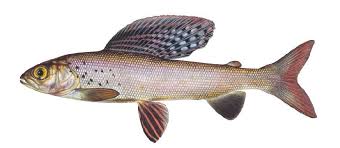
Species
Arctic Grayling (Thymallus arcticus)
Principal biologist(s)
Carter Kruse, Eric Leinonen
Project Locations
Green Hollow Reservoir II, Cherry Creek & Spanish Creek, Flying D Ranch
Willow Creek, Snowcrest Ranch
Conservation Problem
Arctic grayling are widespread throughout drainages of the Arctic and northern Pacific oceans; however distinct populations in Michigan (now extinct) and southwestern Montana have experienced significant declines due to competition from non-native trout and habitat alterations.
Conservation Status
– Considered a Species of Greatest Conservation Need by Montana Fish Wildlife and Parks
– In 2010 the USFWS ruled that the Upper Missouri River Distinct Population Segment (DPS) of Arctic grayling was warranted for listing under the Endangered Species Act but precluded by higher priorities. By 2014 the USFWS determined that conservation efforts by federal, state, and private organizations had improved the species status to a point where listing was no longer warranted.
Project Recognition
2014 MTFWP and USFWS – Arctic Grayling Conservation Award
Project Goals & Objectives
Our overall goal is to maintain a conservation brood stock of Big Hole fluvial Arctic grayling in Green Hollow Reservoir II to support range-wide restoration and restore self-sustaining populations of arctic grayling on Turner Ranches and surrounding landscapes to improve their conservation status. To this end, we aim to manage fluvial Arctic grayling in Green Hollow II in a manner that promotes a healthy grayling brood stock supporting restoration efforts in southwestern Montana
Project Background
TEI has been a partner in grayling conservation in Montana since 1998 when Big Hole fluvial arctic grayling were stocked into Green Hollow Reservoir II to establish a brood stock. The brood stock was intended to serve as a genetic reservoir for Big Hole grayling and a source of grayling eggs for restoration projects across southwestern Montana. Over the past 20 years, TBD has provided invaluable assistance towards grayling restoration by managing the reservoir and brood stock population for these purposes. In 2002 a fish barrier was constructed on Green Hollow Creek to prevent grayling from moving into and spawning in the creek channel (Fig. 11.1). Since 2003, TBD has worked to remove non-native trout from the reservoir and inflowing creek (see Section 10 for summary of non-native trout removal in Green Hollow Creek). Each spring TBD staff assist MTFWP with disease sampling and spawning of grayling. Over the past three years (2015-2017), Green Hollow II grayling have provided approximately 750,000 viable eggs for research on reintroduction of grayling in Michigan, restoration projects throughout southwest Montana, and large-scale restoration in Yellowstone National Park.
Unusually high spring runoff in 2011 deposited large amounts of gravel in the Green Hollow Reservoir II inlet and, despite efforts to disrupt spawning, grayling naturally reproduced below the fish barrier in 2012-15. Beginning in 2016 a bypass system (Fig. 11.2) has been installed annually for about 4 weeks in the spring to prevent spawning in the creek inlet. The wild born progeny from 2012-15 overpopulated the brood pond and resulted in smaller average adult sizes. In 2015 a decision was made to transfer more than 500 of the wild born grayling to lower Green Hollow Creek (below Green Hollow Reservoir I). An additional 536 juvenile grayling were captured and moved during spring trapping activity in 2016. These fish have unrestricted movement into the NF Spanish Creek and, ultimately the Gallatin River, thus represent the first stocking of fluvial Arctic grayling into the Gallatin River system since their local extinction. Additionally, grayling have escaped from Green Hollow II and established a self-sustaining population in Green Hollow Reservoir I. Fish from this population likely have and will continue to escape into NF Spanish Creek, providing a chronic, soft introduction of grayling to the Spanish Creek watershed. MTFWP has confirmed angler reports of grayling caught in the Gallatin River (Fig. 11.3) and Flying D fishing guides also report numerous grayling caught in Spanish Creek. Annual electrofishing surveys have yet to capture a grayling in Spanish Creek and there is no evidence that the fish are naturally reproducing in either location.
TBD staff introduced grayling into lower Cherry Creek (below Cherry Falls and outside of the WCT restoration project area) for the first time in 2016. A total of 10,000 fertilized eggs were stocked into lower Cherry Creek using remote streamside incubation (RSI) devices. RSI’s improve hatching success and allow larval grayling to volitionally leave the incubator and enter the stream habitat.
